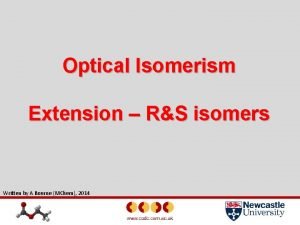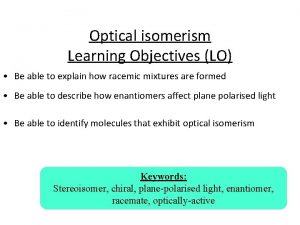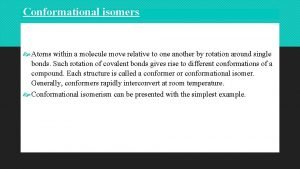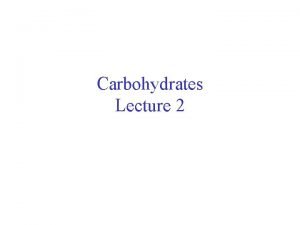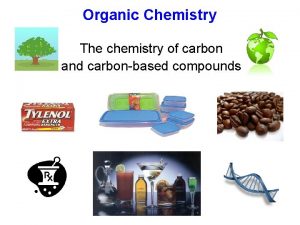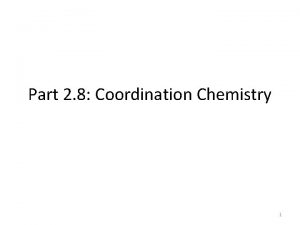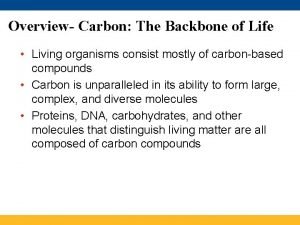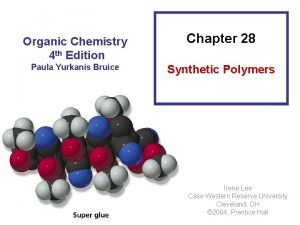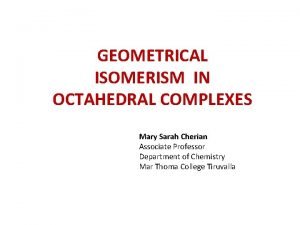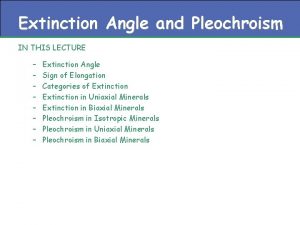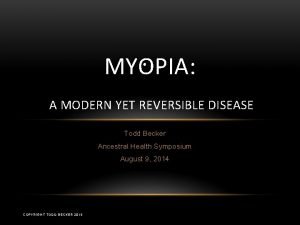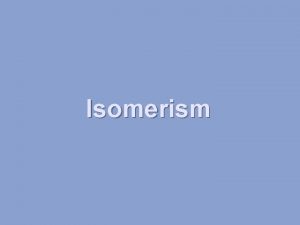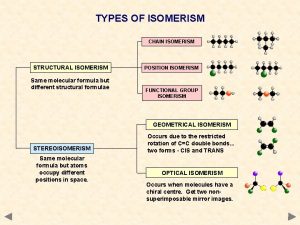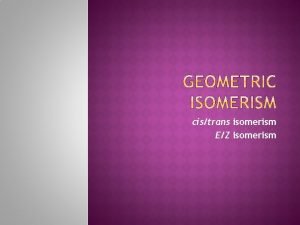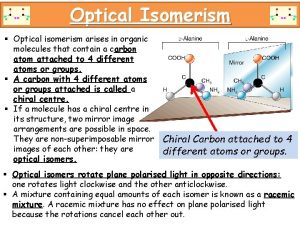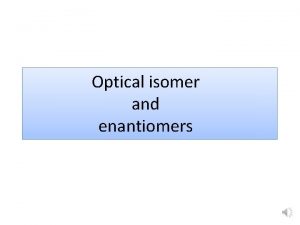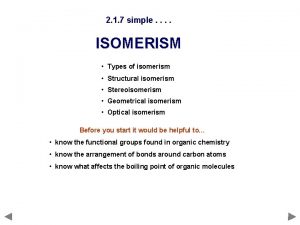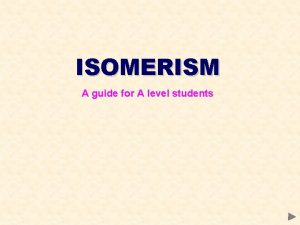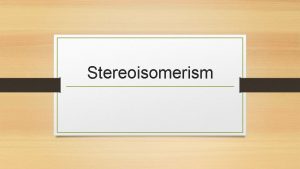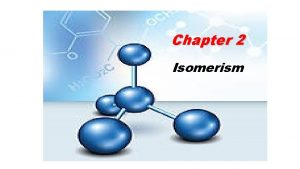C I 3 6 Optical Isomerism Types of














- Slides: 14

C. I. 3. 6 Optical Isomerism

Types of isomerism Isomerism Structural isomerism Stereoisomerism Geometric isomerism Optical isomerism

Different compounds- different properties. geometric isomerism

Optical Isomerism Arises because of the different ways you can arrange four different groups around a carbon atom. Hang on!! Aren’t -amino acids a group of compounds that have four different groups around a carbon atom?

four groups of electrons around the central atom • four bonding pairs • TETRAHEDRAL shape • bond angle exactly 109

alanine imaginary mirrors

All molecules have mirror images – however they don’t all exist as two isomers. What makes an isomer is the fact that the mirror image and the original molecule are non-superimposable! The only way to make these two superimpose is to break & reform bonds.

Left and right hands are an example of non-superimposable mirror images.

Enantiomers ? üMolecules such as alanine that exist in these two forms = optical isomers or enantiomers. ü We distinguish between the two enantiomers of a molecule by +/-, D/L or more correctly R/S. ü A 50/50 mixture of the two enantiomers is called a racemic mixture or a racemate.

Some more key words … üMolecules that are not superimposable on their mirror images are called chiral molecules. üA carbon surrounded by 4 different groups is called a chiral centre of alanine

The CORNy rules for naming enantiomers. Optical isomers exist as L-enantiomers or D-enantiomers. L-enantiomer R CO N D-enantiomer R CO N

The CORNy rules for naming enantiomers. 1. Imagine looking down on the molecule with the single H atom point straight up towards you. 2. Label the other three groups a. COOH = CO b. R-group = R c. NH 2 = N 3. If CORN is arranged in a CLOCKWISE direction it is the L-amino acid. 4. If CORN is arranged ANTI-CLOCKWISE it is a D-amino acid.

How do enantiomers differ? • Behave identically in ordinary test-tube chemical reactions. • Have same physical properties. BUT!! • Behave differently in presence of other chiral molecules. – e. g. Taste-buds are ‘chiral’ D-amino acids taste sweet, L-amino acids are tasteless or bitter.

 2-hydroxypropanenitrile displays optical isomerism
2-hydroxypropanenitrile displays optical isomerism Optical isomers bidentate ligands
Optical isomers bidentate ligands Optical isomerism worksheet
Optical isomerism worksheet Abstract classes in java
Abstract classes in java Cis trans isomerism in cycloalkenes
Cis trans isomerism in cycloalkenes Conformational isomers of propane
Conformational isomers of propane L isomer
L isomer 2-methylpentane isomers
2-methylpentane isomers Spectrochemical series
Spectrochemical series Structural isomer
Structural isomer Polymerization isomerism
Polymerization isomerism Geometrical isomerism
Geometrical isomerism Extinction angle
Extinction angle Why fiber joints and couplers are necessary?
Why fiber joints and couplers are necessary? Acute myopia
Acute myopia


